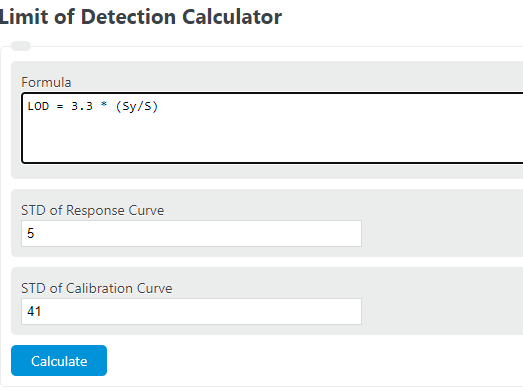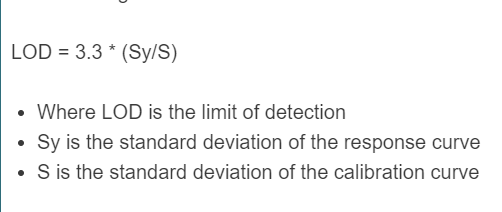Enter the standard deviation of the response of the curve and the slope of the calibration curve into the calculator to determine the limit of detection.
- Relative Standard Deviation Calculator
- Percent Deviation Calculator
- Coefficient of Determination Calculator
- Dawes Limit Calculator
Limit of Detection Formula
The following formula is used to calculate a limit of detection.
LOD = 3.3 * (Sy/S)
- Where LOD is the limit of detection
- Sy is the standard deviation of the response curve
- S is the standard deviation of the calibration curve
To calculate limit of detection, divide the standard deviation of the response curve by the standard deviation of the calibration curve, then multiply by 3.3.
Limit of Detection Definition
A limit of detection is a term used in chemistry to describe the lowest concentration or quantity of a component that can be reliably detected with an analytical method.
Limit of Detection Example
How to calculate a limit of detection?
- First, determine the standard deviation of the response curve.
Calculate the standard deviation of the response curve of the data.
- Next, determine the standard deviation of the calibration curve.
Calculate the standard deviation of the calibration curve of the data.
- Finally, calculate the limit of detection.
Calculate the limit of detection using the equation above.
FAQ
A limit of detection, or LOD for short, is a measure of the lowest level of quantity that a certain analytical method can detect in any concentration of a component. This is most often used in chemistry.

